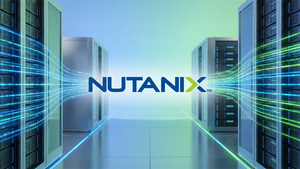
New York, NY – October 24, 2025 – Micron Technology (NASDAQ: MU) has achieved a monumental milestone, with its stock price hitting an unprecedented all-time high of $214.78 USD. This historic surge, occurring on or around October 24, 2025, reflects a confluence of robust financial performance, strategic leadership in cutting-edge memory solutions, and an insatiable global demand driven primarily by the artificial intelligence (AI) revolution. The immediate implications for Micron are profound, solidifying its position as a dominant force in the semiconductor landscape and signaling strong investor confidence in its future trajectory.
This record-breaking valuation underscores a vibrant period for the memory chip giant, which has successfully capitalized on the escalating need for high-performance memory in AI data centers and advanced computing. The company's recent financial results have significantly surpassed analyst expectations, showcasing impressive revenue growth and profitability. For the broader semiconductor market, Micron's ascent is a powerful indicator of the sector's current strength, particularly in segments critical to AI infrastructure, and highlights the accelerating pace of innovation and investment in advanced memory technologies.
Micron's Historic Ascent: A Deep Dive into the Semiconductor Juggernaut's Triumph
The recent rally saw Micron Technology's (NASDAQ: MU) stock price reach an all-time high of $214.78 USD, with its all-time high closing price recorded at $206.77 on October 20, 2025. This remarkable achievement is not an isolated event but the culmination of strategic advancements and favorable market dynamics. Over the past year, Micron has demonstrated exceptional financial resilience and growth, reporting a staggering 49% increase in revenue over the last twelve months. The company's fourth-quarter 2025 earnings further cemented its strong position, with an earnings per share (EPS) of $3.03, comfortably exceeding the forecasted $2.77, and revenues reaching $11.32 billion against an anticipated $11.11 billion.
This impressive performance has been significantly propelled by Micron's aggressive push into the high-growth AI memory market. The company has been at the forefront of developing and sampling next-generation memory solutions, such as new 192GB SOCAMM2 modules specifically designed for AI data centers. These modules boast a 50% increase in capacity and over 20% enhanced power efficiency, making them crucial components for the energy-intensive demands of AI workloads. Furthermore, Micron's high-bandwidth memory (HBM) products are entirely sold out through 2026, a testament to their critical role in powering AI accelerators and the burgeoning data center infrastructure globally.
Key players and stakeholders involved in this upward trajectory include not only Micron's executive leadership and engineering teams but also a robust ecosystem of AI hardware developers, cloud service providers, and data center operators who rely on Micron's cutting-edge memory. Analysts across the financial sector have reacted positively, with many upgrading their price targets for Micron's stock, reflecting increased optimism about the company's future prospects. The market's initial reaction has been overwhelmingly bullish, driving the company's market capitalization to an impressive $240 billion, underscoring its growing influence and value within the fiercely competitive semiconductor industry. This surge also reflects broader investor confidence in the sustained growth of AI and the essential role of memory in its development.
Strategic Victors and Vulnerable Players in the Memory Market Reshuffle
Micron Technology's (NASDAQ: MU) unprecedented stock surge signals clear winners and potential challenges within the semiconductor ecosystem. The most evident victor is Micron itself, whose strategic pivot and innovation in high-bandwidth memory (HBM) and AI-specific DRAM have paid off handsomely. Their fully sold-out HBM capacity through 2026 positions them as a critical enabler for the AI revolution, translating directly into robust revenues and market leadership. Investors holding Micron stock are also clear beneficiaries, riding the wave of increased valuation and optimistic growth forecasts.
Beyond Micron, other companies deeply entrenched in the AI hardware supply chain are likely to see positive ripple effects. Manufacturers of AI accelerators, such as NVIDIA (NASDAQ: NVDA) and AMD (NASDAQ: AMD), who rely on advanced memory solutions like HBM for their GPUs, benefit from the innovation and supply coming from Micron. As Micron pushes the boundaries of memory performance and efficiency, it enables these partners to deliver more powerful and competitive AI systems, potentially boosting their own sales and market share. Similarly, cloud service providers and data center operators, including giants like Amazon (NASDAQ: AMZN) (AWS), Microsoft (NASDAQ: MSFT) (Azure), and Google (NASDAQ: GOOGL) (Google Cloud), stand to gain from the availability of more efficient and higher-capacity memory, which is crucial for scaling their AI infrastructure and offering advanced AI services.
Conversely, companies that are slower to adapt to the rapidly evolving demands of AI memory or those heavily reliant on older memory technologies might face headwinds. While the overall demand for memory is strong, the shift towards HBM and specialized AI DRAM could commoditize standard memory products, putting pressure on margins for manufacturers without a strong AI memory portfolio. Moreover, increased competition in the HBM market, as other players like Samsung (KRX: 005930) and SK Hynix (KRX: 000660) ramp up their own production, could intensify pricing pressures down the line. While these companies are also innovating in HBM, Micron's current lead and sold-out capacity suggest a temporary advantage, prompting competitors to accelerate their R&D and production to keep pace. The event highlights a crucial differentiation point in the memory market, where specialization in AI memory is becoming a key determinant of success.
Broader Implications: AI's Unstoppable March and Industry Transformation
Micron Technology's (NASDAQ: MU) all-time high is more than just a company-specific triumph; it's a powerful testament to the broader industry trend of artificial intelligence becoming the primary growth engine for the semiconductor sector. This event fits squarely into the narrative of a global technological shift, where AI inference workloads and the massive buildout of AI infrastructure are driving unprecedented demand for high-performance computing components, particularly advanced memory. It signals that the investment cycle in AI is in full swing, with memory being a critical, often underestimated, bottleneck that companies like Micron are actively addressing.
The ripple effects of Micron's success and the underlying AI boom are extensive. Competitors, including memory giants like Samsung (KRX: 005930) and SK Hynix (KRX: 000660), are undoubtedly watching closely and are already accelerating their own HBM development and production roadmaps. This competitive dynamic is likely to spur further innovation and potentially lead to an even more diverse and powerful array of memory solutions for AI applications. Partners in the AI hardware ecosystem, from GPU manufacturers to server builders, will benefit from the increased availability and performance of these advanced memory modules, enabling them to design and deploy more sophisticated AI systems. The event also underscores the critical importance of a robust supply chain for these specialized components, potentially leading to greater collaboration and strategic alliances across the industry.
From a regulatory and policy perspective, Micron's commitment to investing $200 billion to boost U.S. semiconductor production and research and development takes on added significance. This aligns with global efforts to strengthen domestic semiconductor manufacturing capabilities and reduce reliance on overseas supply chains, a trend catalyzed by geopolitical tensions and recent supply disruptions. Governments worldwide are increasingly viewing semiconductor self-sufficiency as a national security imperative, and Micron's investments contribute directly to these strategic goals. Historically, periods of intense technological advancement, such as the rise of personal computing or mobile internet, have seen similar surges in the valuations of key component suppliers. Micron's current trajectory echoes these past cycles, positioning memory as a foundational technology for the next era of computing, much like processors were for previous generations.
The Road Ahead: Navigating Opportunities and Challenges in the AI Era
Looking ahead, Micron Technology's (NASDAQ: MU) all-time high sets the stage for both significant opportunities and potential challenges. In the short term, the company is poised to continue capitalizing on the booming demand for AI memory. With its HBM products sold out through 2026 and new, more efficient modules sampling, Micron is well-positioned to maintain its revenue growth and market share in this critical segment. The immediate focus will likely be on scaling production to meet this demand, optimizing manufacturing processes, and continuing to innovate to stay ahead of the curve in memory technology. Investors should watch for further guidance on capacity expansion and new product announcements.
In the long term, Micron's strategic pivots will be crucial. The company must sustain its innovation pipeline, particularly in next-generation HBM and other AI-specific memory solutions, to fend off increasing competition from rivals like Samsung (KRX: 005930) and SK Hynix (KRX: 000660), who are aggressively investing in the same market. Potential strategic adaptations could include deeper collaborations with AI chip designers to co-optimize memory and processing units, as well as exploring new applications for its advanced memory beyond traditional data centers, such as edge AI devices. The market opportunities that may emerge include expanding into specialized AI hardware for autonomous vehicles, robotics, and advanced industrial automation, all of which require high-performance, low-latency memory.
However, challenges loom. The semiconductor industry is cyclical, and while AI demand currently provides a strong tailwind, the risk of future oversupply in certain memory segments cannot be entirely discounted, particularly if multiple players significantly ramp up HBM production simultaneously. Geopolitical factors, trade policies, and global economic fluctuations could also impact demand and supply chains. Potential scenarios and outcomes range from a sustained period of high growth driven by continuous AI innovation to increased market volatility if supply eventually outstrips demand or if new, disruptive memory technologies emerge. Micron's ability to navigate these complexities through strategic R&D, disciplined capital expenditure, and agile market responsiveness will determine its sustained success.
Conclusion: Micron's Defining Moment and the Future of AI Memory
Micron Technology's (NASDAQ: MU) stock reaching an all-time high of $214.78 USD on or around October 24, 2025, marks a defining moment not only for the company but for the entire semiconductor industry. The key takeaway is the undeniable and accelerating impact of artificial intelligence on driving demand for advanced memory solutions. Micron's strategic foresight in focusing on high-bandwidth memory (HBM) and AI-optimized DRAM has positioned it as a critical enabler of the AI revolution, translating directly into robust financial performance and soaring investor confidence. The company's impressive revenue growth, strong earnings, and sold-out HBM capacity through 2026 underscore its current market leadership.
Moving forward, the market will continue to be shaped by the relentless march of AI. Micron's success highlights a broader trend where companies providing foundational hardware for AI infrastructure are poised for significant growth. However, the landscape remains dynamic and competitive. While Micron currently enjoys a strong advantage, other memory giants are aggressively investing in HBM, suggesting that the competitive intensity will only increase. This environment will necessitate continuous innovation, strategic partnerships, and efficient scaling of production to maintain market position.
Investors should closely watch several factors in the coming months. These include Micron's ongoing capital expenditure plans for expanding HBM production, any new product announcements or technological breakthroughs, and the broader supply-demand dynamics within the AI memory market. Furthermore, monitoring the progress of AI adoption across various industries and potential shifts in regulatory policies regarding semiconductor manufacturing will be crucial. Micron's journey to this all-time high serves as a powerful illustration of how technological inflection points can reshape industries and create immense value for companies at the forefront of innovation. The lasting impact of this event will likely be seen in the accelerated development of AI technologies, fueled by increasingly powerful and efficient memory solutions.
This content is intended for informational purposes only and is not financial advice






